Young children learn through observation. They love exploring the world around them, observing the nuances of everything they see. Interestingly, many people, things and places share similar characteristic and may differ in only one or two small ways. Also, many letters (such as B and P or J and L) appear very similar and only differ in a small way.
Visual discrimination is the ability to identify specific characteristics of viewed objects including size, color, shape, and details to name a few. It is easy to understand the important role visual discrimination skills play in every aspect of learning. To differentiate between letters and numbers, for example, a child would have to notice slight, but important differences in formation. Imagine the visual discrimination skills needed to differentiate and identify the numbers 3 and 8, for example, or the letters N and M or P and R.
Many parts of a preschool or kindergarten classroom use visual imagery, including: 1) Reading and writing; 2) Mathematics; 3) Social studies and science; and 4) Social interactions.
Role of Visual Discrimination in Reading and Writing
As discussed in detail in the section on Letter and Word Awareness, children must be able to successfully distinguish between different letters in order to read and write words. As Winnie the Pooh famously said, “To the uneducated, an A is just three sticks.”
For example, if your child is unable to distinguish the letter “b” from the letter “p,” he will incorrectly read the word “bat” as “pat.” This will inevitably lead to frustration and self-doubt, as your child struggles to understand why the sentence does not make sense (which it likely will not since “bat” and “pat” are not interchangeable words).
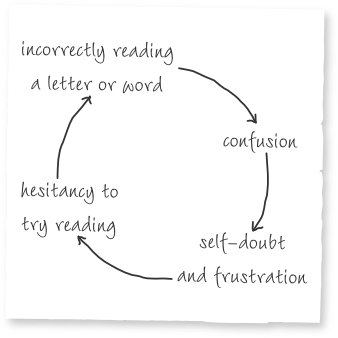
Role of Visual Discrimination in Mathematics
Comfort with numbers and mathematical concepts relies foremost on the ability to distinguish between different number symbols. As with letters, numerous numerals are similar in formation, such as:
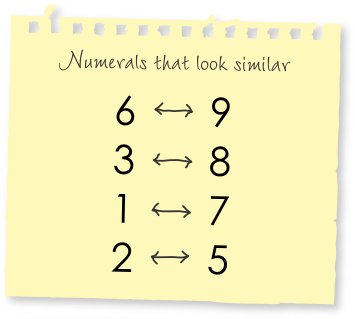
For example, many young children can respond appropriately when asked, “What is three plus one?” However, many of these same children could not complete a basic math worksheet where the same question is asked in writing, “3 + 1 = ?” This is because children with weak visual discrimination skills cannot properly distinguish between all of the numerals.
Double-digit numbers also pose a unique visual discrimination challenge for children. When facing a double-digit (or triple- or quadruple-digit) number, a child must not only identify the numerals correctly, but also process them in the correct order from left to right. For example, 18 and 81 represent very different amounts and 7:05 and 5:07 are very different times of the day (just ask a sleep-deprived parent!). Also, consider the visual similarity between the number 10 and the numbers 100 and 1000.
Role of Visual Discrimination in Social Studies and Science
Regardless of the type of school your child is or will be attending, all social studies and science classes introduce information with visual models and demonstrations. Often a teacher will model an activity for the class and then ask the children to replicate the activity at their own workstation. Or, children may be asked to make observations about the experiment by drawing a picture or writing descriptive sentences.

A child with weak visual discrimination skills will observe the demonstration but will be unable to replicate the work at his own desk or complete a worksheet asking follow up questions. Out of frustration, he may fool himself into thinking he is “not good at science.” When, in actuality, he may have a strong natural ability for science but simply lack well-developed visual discrimination skills.
Role of Visual Discrimination in Social Interactions
Visual discrimination skills also play an important role is facilitating smooth social interactions. Children must be able to interpret and understand subtleties in facial expressions and body language to interact comfortably with others.
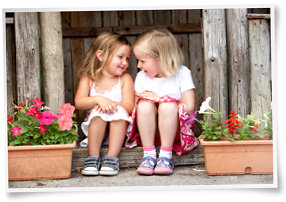
Just think of how hard it would be for your child to remember the names of his classmates if everyone was a four foot tall girl with long brown hair and green eyes. Easily identifying and remembering the physical differences in each classmate, along with identifying and remembering the details of the classroom setting and routine, will allow your child to comfortably navigate the new school environment.
Tips for Accelerating Your Child’s Visual Discrimination Development
Visual discrimination skills are honed through practice. Particularly for young children, it may be necessary for you to work with your child to help him learn to identify differences and similarities among certain images.
For example, consider starting with comments such as, “The red car is much bigger than the blue car. But the blue car is much bigger than the yellow car.” Or, “It’s interesting how the letter T has one long line across the top and the letter F has two shorter lines on top and in the middle.” By pointing out these types of differences, you will alert your child to the fact that differences exist among all visual images.
When first working with your child, I recommend introducing two objects at a time. Making comparisons between two objects is far easier than making comparisons among numerous objects. Also, comparing objects is easier for a child than comparing images, as your child can hold objects and use physical clues (such as weight and texture) to aid his visual discrimination skills. Toy cars make the perfect objects to compare as they are inexpensive and often have many distinguishing characteristics such as a color, shape, style, and number of doors.
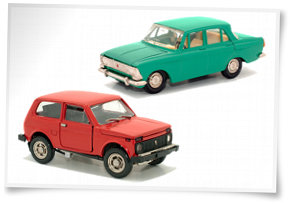
After your child has observed the two objects, ask him questions to help focus his observations. Consider questions such as, “Which one is bigger?” Or, “Which one is green?” As your child gets comfortable answering those questions, you can prompt your child to ask you a question about the objects. Having your child ask you a question will force him to first observe a difference or similarity and then use that information to form a relevant question.
Once your child is comfortable noting similarities and differences between two objects, play the same game using two pictures. Unlike objects he could hold, pictures will force your child to rely only on visual discrimination skills to note the similarities and differences.
Considering taking the pictures yourself of common items you have at home. For example, if you first played the game with two of your child’s toy cars, consider taking pictures of those same cars and having your child observe those pictures when answering questions about their visual characteristics. As your child gains comfort observing different pictures, increase the number of pictures you give your child each time.
Once in the classroom setting, your child will naturally apply his visual discrimination skills to all areas of learning, including Letter and Word Awareness, Math and Number Development, and Social and Emotional Development.
Learn More About What Will Be Expected of Your Child in School
When children begin preschool, they enter an unfamiliar classroom filled with unfamiliar people and materials. They must rely on strong visual discrimination skills to remember the location of their cubby and their friends’ names. In preschool, children must also utilize visual discrimination skills to observe the lessons being taught and learn subtle distinctions such as the difference between the letters L and J and the difference between the number 6 and 9. By kindergarten, children are expected to quickly learn the names of all new classmates and new materials. Kindergarten children are also expected to already know the differences between all 26 letters and 10 number symbols. In kindergarten, children are expected to utilize strong visual discrimination skills to observe more complex lessons and demonstrations and then use those observations to replicate a demonstration at their own work station.
Beginning of Preschool
When children begin preschool, they are expected to observe their new surroundings and use visual cues to help them learn the classroom routines. For example, if children are assigned specific places for hanging coats, listening to a story or working with crayons, they will be expected to take note of these locations and procedures and remember them.
Children are expected to remember the names of their classmates and teachers by identifying distinguishing characteristics such as hair color, height, eye color, and physical stature. After one or two weeks in the classroom, your child should be able to point to the other children in his class and tell you each one’s name. It is common for there to be two children of the same name in a class, and your child will be expected to recognize the differences between the similarly named students.
Teachers will introduce information, particularly during science lessons, through visual demonstrations and experiments. Children are expected to observe and understand the demonstrations.
As part of the pre-reading curriculum used in many preschool classrooms, children will be introduced to the 26 letters and 10 numerals early in the school year. Visual discrimination skills are vital for learning to distinguish and name each letter or number. After seeing a letter or number two or three times, children are expected to remember the number or letter’s name.
Beginning of Kindergarten
At the start of kindergarten, children are expected to observe their new classroom and become familiar with any new routines and procedures. This includes learning the names of new friends, using observations about eye color, hair color or height to help. After two weeks, children should be able to remember where all materials are kept, where their locker is, and where they are assigned to sit during a group lesson.
Children should be able to complete basic games that require visual discrimination, such as the classic matching game where children take turns turning over cards trying to select two cards that have the same picture. Children should also be able to complete worksheets asking the child to draw a line between two identical pictures or to draw a line between a picture and its outline. Lastly, children should be able to follow basic instructions such as “color the top of the house blue and the front door of the house green,” by easily distinguishing between the two colors.
The names of all 26 letters and 10 numerals will be reviewed early in the school year, but children are expected to remember this information from the preschool curriculum. Children should be able to distinguish between similarly formed letters (such as B and P or J and L) and similarly formed numbers (such as 10 and 100 or 9 and 6).
Children are expected to use visual discrimination skills to help them understand information presented during science or social studies units of study. This includes observing a demonstration, remembering any steps in the procedure and remembering what the final outcome should look like. Children may be expected to replicate an experiment or activity at their own work station.
It’s never too early to begin playing games with children that present opportunities to practice visual discrimination. Once spoken language is understood, a young toddler can be directed to pick up the round ball when shown a ball and a shoe, for instance. Young children enjoy following commands in a game situation. Try placing two or three different objects on the floor and direct your child to grab a specific object and bring it to you or put it in a box or basket set out in the room.
Colorful visual discrimination worksheets also offer engaging opportunities for children to hone visual discrimination skills. The worksheets titled “Identical” in the Compare and Contrast category of the Visual Discrimination section of worksheets ask children to look at the first picture in a row and find the identical picture in that row. As your child’s visual discrimination ability increases, he will be able to spot the identical picture in rows with more choices to view, moving from the beginning level worksheets to the intermediate level worksheets. The advanced level “Identical” worksheets ask children to look at the entire row and spot the one picture that is not identical to the others.
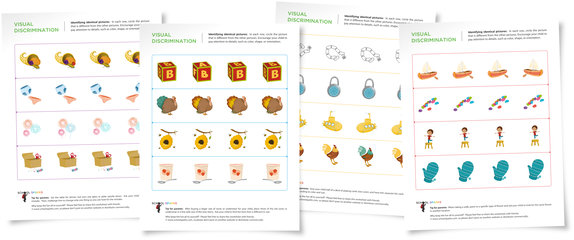
When your child demonstrates comfort with the compare and contrast worksheets, you can create some visual discrimination games yourself.
- The “I Spy” game is always popular with young children and is an ideal way to practice visual discrimination when waiting at a doctor’s office or in line at the bank or grocery store. This game requires children to attend to details in objects seen in their environment and can also be a wonderful way to help reinforce knowledge of colors, as the color of the object can be a major clue.
- Cut index cards in half to yield 2 1/2” x 3” rectangles. On two cards write the identical uppercase or lower case letter. On two additional cards, write different, but somewhat similar letters and place the four cards in a row. For example, you may have a row of these four cards: W V X W. Then ask your child to pick the two identical cards in the row. You can make this game as easy or as challenging as you like.
- Create a row of alike and different utensils and ask your child to choose the two that are alike. Using soup spoons with teaspoons or salad forks with dinner forks can add to the challenge since the size, not the shape, of the items must be recognized to discern the identical pieces.
- Look at pictures in storybooks or magazines with your child and ask her to spot specific items. Once again, you can create a game that is as difficult or easy as your child’s skill level dictates. When the picture is correctly found, your child can draw a circle around it with a pencil or crayon.
An ability to compare and contrast requires strong visual discrimination skills
Many objects, items, or people may, at first glance, appear very similar. For example, nearly all trees are tall with rough, brown bark and soft, green leaves. However, some trees may have smooth, grayish bark and other trees many have long, pointy pine needles in lieu of leaves. Because of this, an ability to observe these distinguishing characteristics and be able to tell the difference between the many different trees is important.
Honing visual discrimination skills with compare and contrast
Since visual discrimination requires strong visual skills, visual discrimination worksheets are the perfect tool for your child to use in honing this important skill set.
Tips for using the “Different Sizes” compare and contrast
Before you introduce the different sizes worksheets to your child, review the terms big, small, medium, biggest and smallest. You might take three very different sized cans or boxes out of your cupboard and ask your child to point to the big one, small one, medium one, etc. Or simply cut a piece of paper into three distinct sizes and question your child to make sure that he understands the vocabulary for this worksheet.
Then, before reading the actual direction, ask your child to point to the small and large picture. (For the intermediate and advanced worksheets, also ask your child to point to the medium sized picture.) If he correctly identifies the sizes and pictures, give your child a pencil and read the directions to him.
If multiple pictures on the page seems distracting for your child, simply fold the page to reveal one set of pictures at a time.
Tips for using the “Identical Pictures” compare and contrast
To help your child focus on one line at a time, either fold the page or cover part of the page with a plain sheet of paper. This will help his eyes track across the page from left to right.
Before using a pencil, direct your child to use his finger to point to the the matching picture in each row. As he points to the matching picture, ask him to tell you some of the characteristics of the picture in the box. For example, he might say that the butterfly has blue wings and a brown body or the king has a crown and a beard. After your child correctly identifies the matching picture and highlights some details in it, let him mark his answer with his pencil.
Extra activities to compare and contrast
- While dining out, have your child look at the table then close his eyes while you remove one or two items from the table. Then have him open his eyes and see if he notices what is different. This activity will help your child notice small differences, as you add and remove minor items from the table, which requires strong visual discrimination skills.
- For an easy visual discrimination game, cut many small squares off a single sheet of paper and ask your child to arrange the pieces from smallest to largest. Or, as you put away groceries, give your child 3 or 4 different containers and ask him to put them in order from smallest to largest. Sorting items from smallest to largest requires keen visual discrimination skills as many of the pieces or containers may be very similar in size. You can also give your child a stack of measuring cups and ask him to put them in order on the counter from smallest to biggest.
- At dinnertime, fill two glasses with different amounts of water and ask him to pick the one that contains more water. Or, fill two different shaped cups with the same amount of a snack and ask your child which he wants. Then show him how they looked different but actually had the same amount. This is an advanced visual discrimination activity that requires your child to compare not only the height of the item in each container, but also the shape of the different containers.
- Have your child give you three different books and then pick the one he wants to read with you by asking for it according to its size. For example, “Let’s read the smallest book.” Together with your child, compare and contrast the different books to determine which is the smallest, for example.
- Take pictures of your child’s block creations before they are torn down. Later, challenge your child to recreate the structure using the picture to guide him. To create an identical block structure, he will need to observe each distinguishing characteristic in his first creation and copy it exactly. He will also need to compare and contrast his new creation with the original creation in the picture to ensure he replicates it correctly.
- Stand next to another adult and ask your child to identify 3 similarities and 3 differences between you. Who is taller? Who has longer hair? Do you have the same color hair or eyes? Or, as you walk outside, challenge your child to find two leaves that are the same size or color. Then ask him to find two trees that are the same height. Your child will need to compare and contrast the trees that he sees to find two that are the same height or color or to notice the subtle differences between hair colors.
Importance of visual discrimination
Strong visual discrimination skills are essential for success in school, regardless of how old your child is or what grade he is in. However, these skills are especially critical for children in preschool and kindergarten who are learning letter formations and numeral formations as well as learning how to navigate in the school classroom and environment.
Visual discrimination is the ability to differentiate characteristics of visual images. It is easy to understand why this skill is essential for school success. For example, a child must be able to identify the characteristics of letters and see differences between letters to be able to read. For example, to read correctly, a child must be able to identify all letters and differentiate between letters that are similar, such as b, p, g. and q or P, B, R, and F. Consider the similarity between these pairs or numbers – 3 and 8, 6 and 9, or 1 and 7. Without visual discrimination skills, it would be extremely difficult to identify the differences and remember those numbers. Actually, visual discrimination skills are important in all aspects of learning. In addition, visual discrimination skills help children feel comfortable in social situations which call for identifying a large variety of people and even recognizing other people’s feelings.
The good news is that visual discrimination skills are easy and fun to practice! To begin, there are over 100 challenging visual discrimination worksheets that are designed to help your little one practice and hone visual discrimination skills. Little guys love to do “homework” and these colorful and engaging worksheets fit the bill.
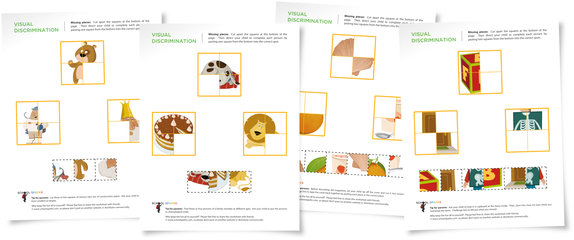
In addition to the worksheets, try some of these visual discrimination games. Nicely, many of these activities can be initiated anywhere and anytime you have a few spare minutes.
- Play “I Spy” by asking your child to spot a specific item within his view. Adding details to your description of the item will force your child to look carefully to spot the exact item you have in mind.
- Use cereal pieces, beads, or buttons to create a small group of items. Make sure that all items are identical except for one. Ask your child to spot the piece that is different from the rest. At first, the difference can be quite obvious, but as you and your child play this game, create groups in which the difference is more and more subtle. Perhaps, one button has a small chip in its side or one bead is slightly lighter in color than the others.
- Write a string of four numbers or letters on a piece of paper. Have three of the four letters or numbers be identical and the fourth letter be similar, but different. Place the different letter or number in various positions in the line so that your child will need to review the entire line before choosing the one that is different.
- Vary the activity above by writing a line of four letters or numbers where only two match and the others are similar, but different.
- Show your child pictures in a book and ask her to point to specific things. Again, this activity can begin with obvious choices and progress to smaller or less obvious choices.
- Introduce “hidden picture” puzzles where a familiar item is camouflaged in a picture. You can find these puzzles in some children’s magazines or in picture books at your library.
- Ask your child to help you find specific items on a grocery or drug store shelf.
- Show your child photos of people at various ages or in different locations and ask him to describe the differences he sees. Perhaps his father’s hair is longer in one picture or he is wearing shorts in one picture and slacks in the other.
The popular box game, Guess Who?, offers children a fun way to notice specific details in illustrations of people or animals.


